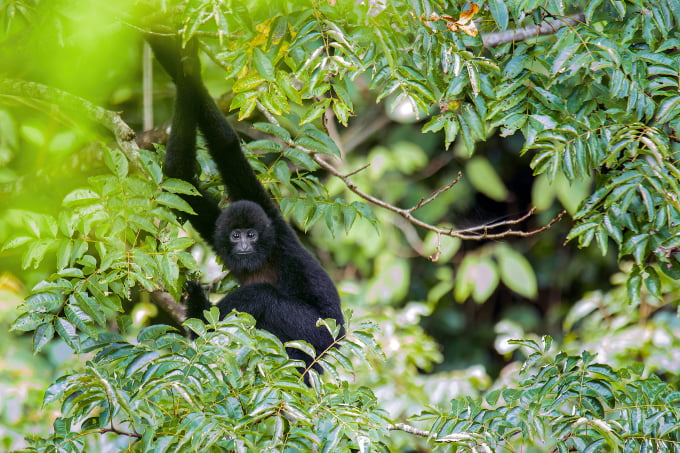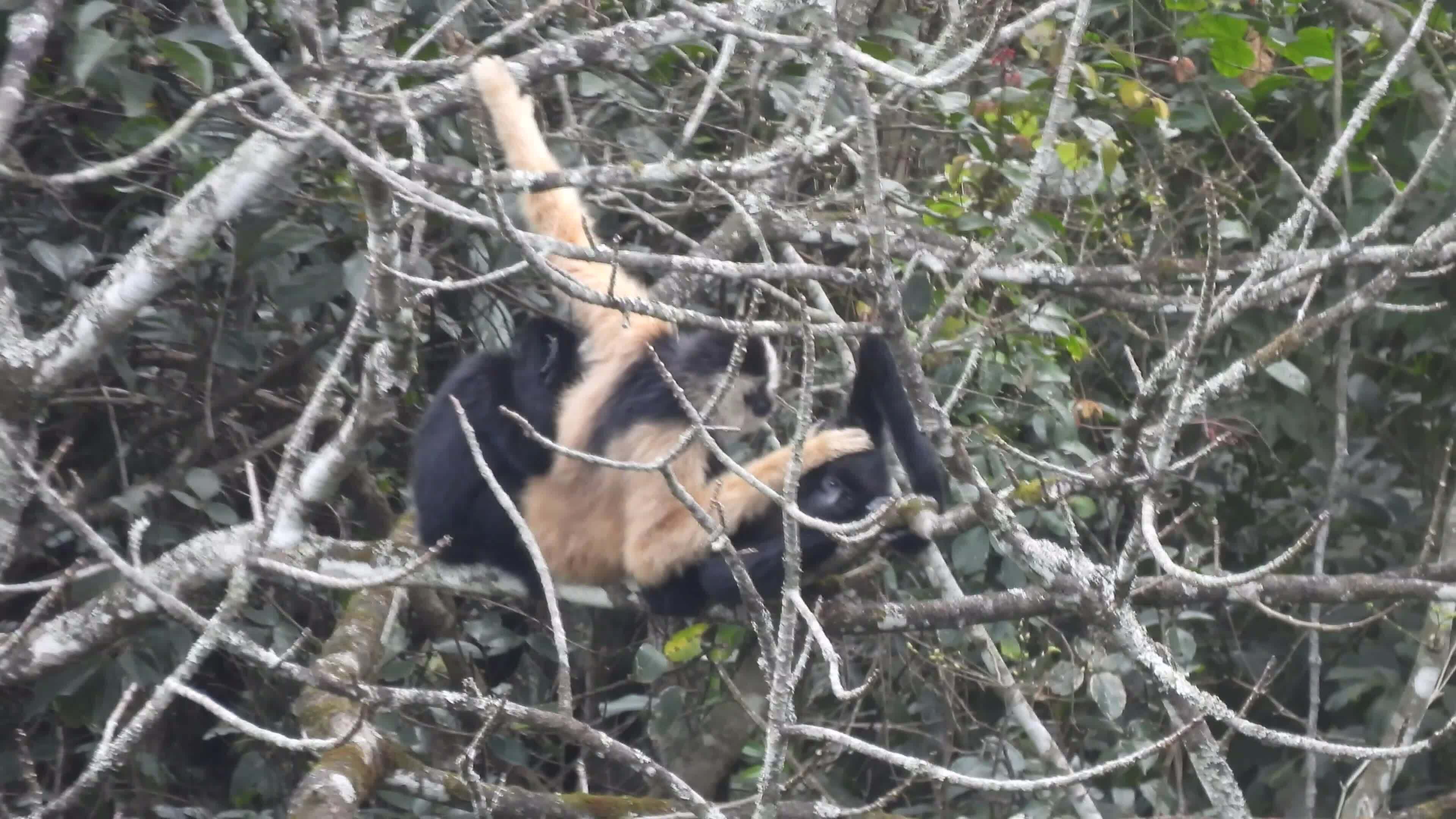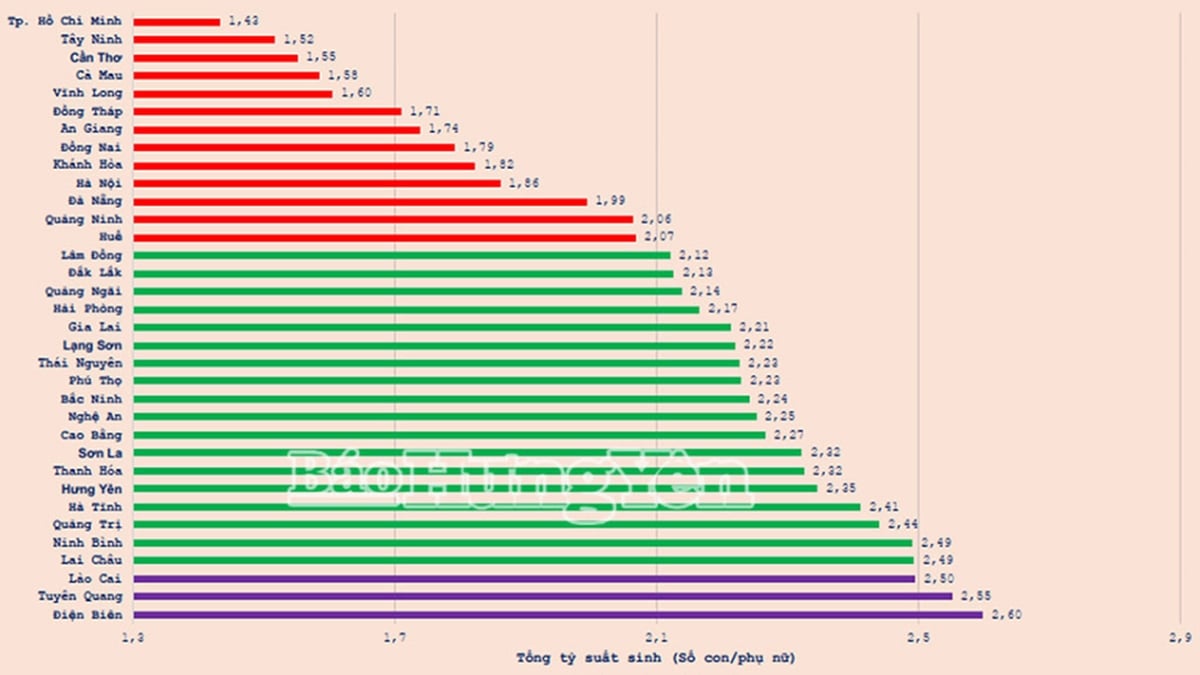Cao Bang Fauna & Flora Organization in Vietnam used vocal biometric technology to confirm that the Cao Vit Gibbon species distributed in the small forest on the Vietnam - China border is 74 individuals instead of the previously estimated number of 120.
The study was published in the journal Nature on January 3, 2024. The 2021 survey to reassess the population of the Cao Vit gibbon, a rare primate once thought to be extinct, was conducted by the Fauna & Flora Organization in Vietnam. This is the first time the research team has applied the "singing biometrics" technique, using a recording device to record the singing of gibbons and accurately identify the singing of each individual.
The Cao Vit gibbon (also known as the Northeast black-crested gibbon), scientific name Nomascus nasutus. This is the second rarest gibbon species in the world and is on the list of the 25 most endangered primates in the world. This species is currently only found in the Cao Vit gibbon Species and Habitat Conservation Area in Trung Khanh District, Cao Bang Province and the adjacent forest area of the Bang Luong National Nature Reserve, Guangxi Province, China.

The male gibbon is black all over and has a crest on its head. Photo: Nguyen Duc Tho/ Fauna & Flora.
According to scientists, each gibbon has its own unique song, with the male being more distinctive. The team used 29 listening points to monitor and record the gibbon troop's "cao vit" song from before sunrise to noon. Thermal-seeking drones were also used to identify the troop and count the number of individuals more accurately. This activity was deployed from late October to early November 2021, detecting 74 individuals.
Previous monitoring methods were carried out using binoculars and cameras, so the estimated population was 120. The research team also encountered many difficulties in the rugged, steep, and almost inaccessible limestone terrain as the gibbons moved very quickly in the dense forest canopy.
Lead researcher Dr Oliver Wearn said that the gibbons were “loud singers”. They asserted their territory mainly by singing, which could be heard for kilometres. Each adult male had its own song, and they took advantage of this to conduct the survey.
“Vocal biometrics allow for a more accurate overall picture of species population size, allowing for population studies without human interference with their natural behaviour,” said Oliver.
Mr. Nguyen Duc Tho, Project Manager of Cao Vit Gibbon Conservation, Fauna & Flora Organization in Vietnam, said that using new technology to monitor the population helps increase accuracy and provide more reliable data. New technology also allows for a better understanding of this special primate species.
The Gibbon lives in small groups in trees. Video: GCT team /Fauna & Flora.
This gibbon species was recorded in Vietnam in 1884, and by 1965, three specimens were collected in Trung Khanh district, Cao Bang province. After that, this gibbon species was considered extinct until it was rediscovered by the Fauna & Flora Organization in 2002. Accordingly, scientists discovered a population of about 26 individuals still existing in a small forest, belonging to Phong Nam and Ngoc Khe communes, Trung Khanh district. In order to preserve this extremely rare primate species, Cao Bang province has established the Cao Vit Gibbon Conservation Project, operating since March 2004, and established the Cao Vit Gibbon Species and Habitat Conservation Area in 2007.
Nhu Quynh
Source link































































![[Maritime News] More than 80% of global container shipping capacity is in the hands of MSC and major shipping alliances](https://vphoto.vietnam.vn/thumb/402x226/vietnam/resource/IMAGE/2025/7/16/6b4d586c984b4cbf8c5680352b9eaeb0)






































Comment (0)